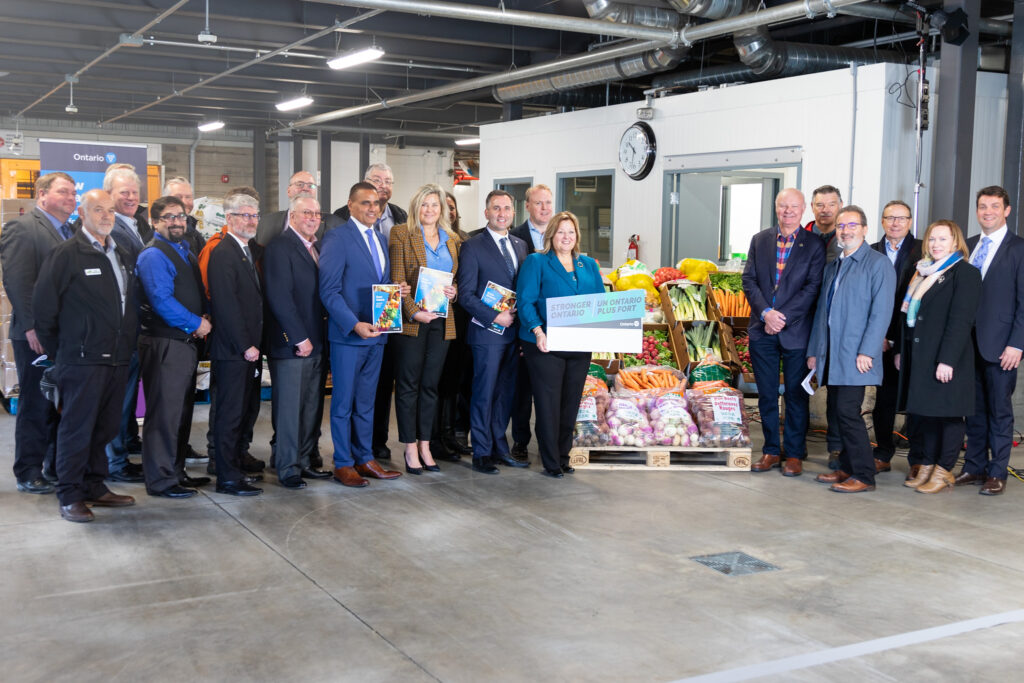
News
Labour
Management
Ontario unveils plan to strengthen food supply chain from farm to fork
Ontario’s agri-food sector employs more than 750,000 people, accounting for one-in-ten jobs in the province.
November 29, 2022 By The Ontario government
 (Photo provided by: The Ontario government)
(Photo provided by: The Ontario government) The Ontario government has released the Grow Ontario Strategy. The strategy outlines the province’s plan to strengthen the agri-food sector, ensure an efficient, reliable, and responsive food supply and address ongoing vulnerabilities through new innovations. The sector’s vulnerabilities include labour shortages, outdated supply chain infrastructure and declining processing capacity.
The plan focuses on three key priorities:
- Strengthen Agri-food Supply Chain Stability: Increase both the consumption and production of food grown and prepared in Ontario by 30 per cent, increase Ontario’s food and beverage manufacturing GDP by 10 per cent and boost Ontario’s agri-food exports eight per cent annually by 2032. This includes opening applications for the $10 million Food Security and Supply Chain Fund which will provide funding for projects such as updated inventory software, expanded warehousing to allow increased inventory levels or automation equipment to address labour gaps. The province is also strengthening its food processing capacity and food security to position the sector for growth through the $25 million Strategic Agri-Food Processing Fund.
- Increase Agri-food Technology and Adoption: Boost research infrastructure, advance the uptake of new technologies, grow the market for Ontario innovative technologies domestically and globally, and grow the use of data to support efficiencies in the agri-food sector and value chain. The province will also begin consultations on modernizing the Agricultural Research Institute of Ontario Act to fuel innovation and support efforts to provide modern, relevant research information to farmers and agri-food businesses.
- Attract and Grow Ontario’s Agri-food Talent: The province aims to increase total agri-food sector employment by 10 per cent by 2032, as well as increase awareness of modern, high-tech agri-food careers, opportunities for mentorship and hands-on job training, and support efforts to increase veterinary capacity in underserviced areas of the province. This includes launching public consultations to explore opportunities to modernize the Veterinarians Act as part of the plan to increase access to veterinary care in Ontario.
There are many components of the strategy that will benefit Ontario’s greenhouse sector, including the government’s commitment to:
- Modernize and strengthen the agreement between the Ontario Ministry of Agriculture, Food and Rural Affairs and the University of Guelph to meet the research and innovation needs of today’s agri-food sector.
- Develop programming to support commercialization, piloting and demonstrations of new technologies and to apply new innovations on farm, in processing facilities and throughout the broader supply chain.
- Utilize agri-food technology adoption working groups to generate input on priority adoption areas for the sector, such as robotics, data digitization/utilization, energy, and labour.
- Launch an initiative to increase awareness of modern agri-food careers and occupations, expanding target groups by educating, attracting, growing, and retaining agri-food talent, while increasing access to the agri-food sector for equity deserving groups.
- Increase hands-on agri-food sector job training opportunities to attract and equip prospective agri-food job seekers, including mentorship opportunities, recruitment pilot, review current programs and establish responsive training, as well as opportunities for new experiential learning in the areas of innovation advanced technologies in support of the agri-food sector.
- Work with government to leverage existing programming to develop an agri-food labour campaign to increase job entry pathways to the agri-food sector.
- Build on the success of the International Agricultural Worker Welcome Centre and provide continuing information, co-ordination and supports to assist IAWs in Ontario.
- Partner with commodity groups to strengthen their supply chains through stakeholder proposed solutions.
- Support sector strategy development to address and resolve supply chain challenges.
The Grow Ontario Strategy was informed by the insights of farmers, Indigenous community representatives, food sector leaders and businesses. The government is also working to reduce duplication and unnecessary burden and is encouraging the agri-food sector to submit their best ideas to reduce legislative and regulatory barriers to help enable a stronger supply chain.
Ontario’s agri-food sector employs more than 750,000 people, accounting for one-in-ten jobs in the province. Roughly 48,346 Ontario farms produce over 200 different commodities.
Print this page